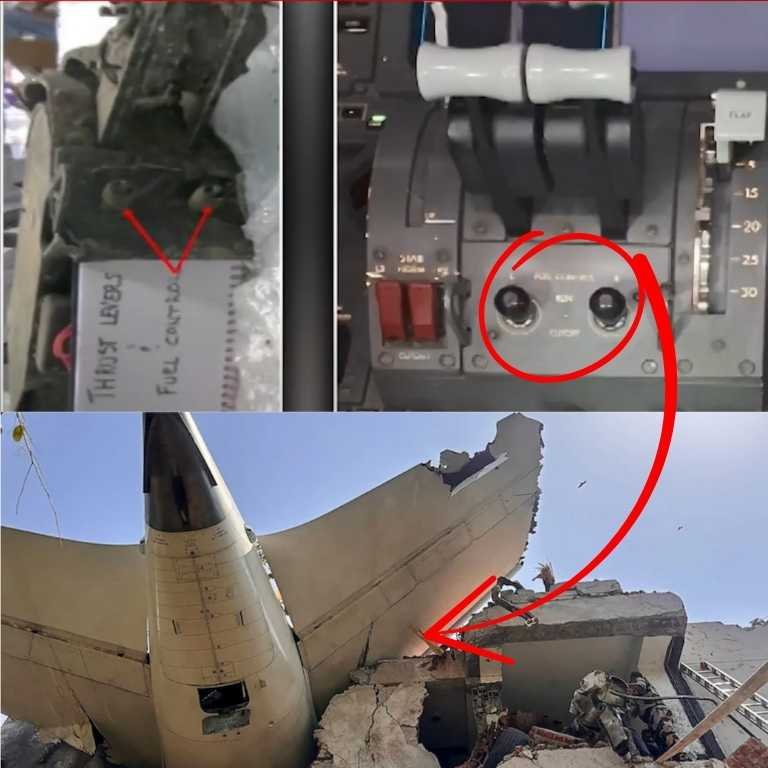In a tragic reminder of the complexity of aviation systems, a recent preliminary crash report has shed light on what may have led to the fatal Air India incident involving a Boeing aircraft in July 2025. At the heart of the investigation are two crucial but often overlooked components—engine fuel control switches. This article explores what these switches are, how they function, and why their suspected misactivation became the focal point of a disaster that claimed lives and raised urgent questions about aviation safety.
What Are Fuel Control Switches and How Do They Work?
Fuel control switches—also known as engine run/cutoff switches—are vital cockpit controls that regulate fuel flow to an aircraft’s engines. Each engine typically has its own switch, and their positions are simple yet critical: RUN to allow fuel flow for ignition and continued operation, and CUTOFF to stop fuel delivery and shut the engine down.
These switches are designed with mechanical interlocks and guards to prevent accidental activation. They are usually manipulated during startup, engine shutdown, or emergencies requiring a rapid cutoff, such as an onboard fire. In commercial aircraft like the Boeing 787, these switches are protected under the throttle quadrant and require deliberate, forceful action to operate.
Theoretically, these switches should never be touched during takeoff. Yet, in the case of the Air India crash, evidence suggests both switches were moved to the CUTOFF position within seconds of rotation—an action with devastating consequences.
The Air India Crash: Timeline and Key Findings
According to the preliminary report released by India’s Aircraft Accident Investigation Bureau (AAIB), both fuel control switches on the Air India aircraft were moved to CUTOFF seconds after takeoff. The cockpit voice recorder (CVR) picked up a disturbing exchange: one pilot was heard asking, “Why did he cut off?” while the other denied moving the switch. Despite efforts to return the switches to RUN, the engines failed to reignite in time due to the aircraft’s low altitude.
What makes this scenario even more unsettling is the near-simultaneous shutdown of both engines—highly improbable under normal circumstances. In most modern aircraft, even a single engine flameout can be handled safely. But with both engines losing thrust within one second of each other, the aircraft had virtually no time or altitude to recover.
The aircraft plummeted and crashed into a field near Ahmedabad, claiming all onboard. Investigators are now exploring whether the incident was due to pilot error, mechanical fault, or a software anomaly.
FAA Warnings and Prior Concerns
The revelation has also reignited concerns over fuel switch designs. In 2018, the U.S. Federal Aviation Administration (FAA) had flagged certain Boeing models for potential vulnerability due to inadequate locking mechanisms on fuel control switches. Although that advisory didn’t directly apply to the Boeing 787, which was involved in this crash, critics argue that warnings like these should’ve prompted broader preventive measures across aircraft models.
Investigators from Boeing, GE (the engine manufacturer), and U.S. regulators are now collaborating with Indian authorities. Black box data analysis is ongoing and expected to take several months, possibly over a year, to conclude with definitive answers. Until then, safety experts are urging airlines worldwide to re-examine training protocols and mechanical safeguards related to fuel control systems.
Redefining Trust in Aviation Systems
This tragedy has shaken public confidence and exposed a rare yet catastrophic vulnerability in modern aviation. With the growing automation in cockpit systems, human-machine interactions must remain foolproof—especially during critical flight phases like takeoff.
Should the investigation ultimately determine human error, it would underscore the urgent need for improved cockpit training and clearer interface design. If a mechanical or software fault is confirmed, it could result in global safety directives impacting hundreds of aircraft. Either way, the Air India crash is already prompting reevaluations of long-standing safety assumptions.
As the aviation world waits for answers, one lesson is crystal clear: in an industry where precision and safety are paramount, even the smallest switch can make the difference between life and loss.



